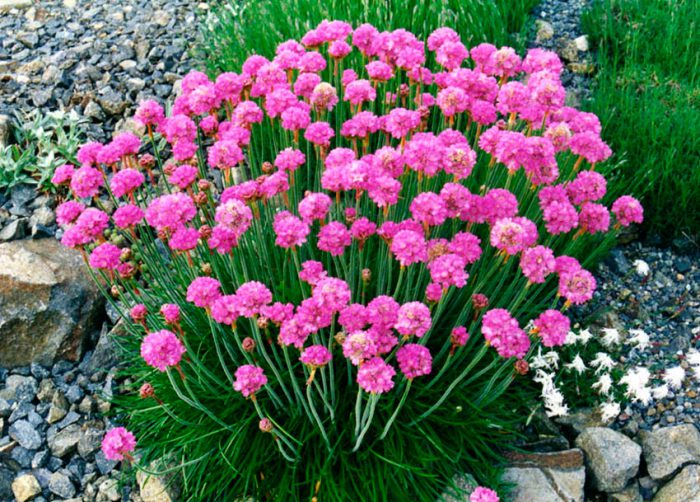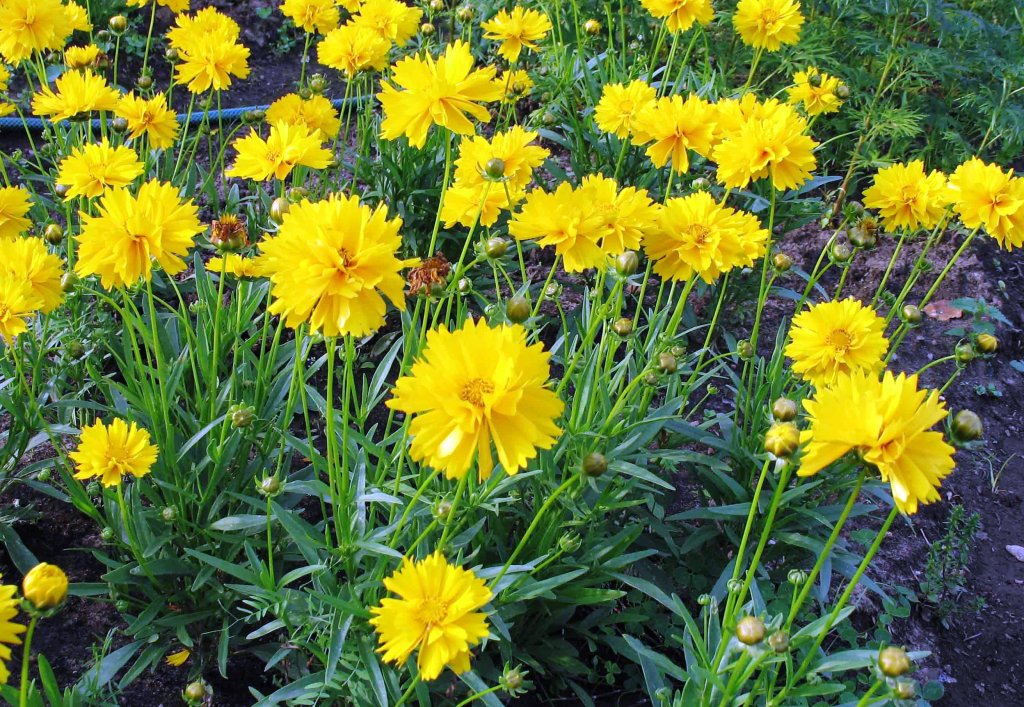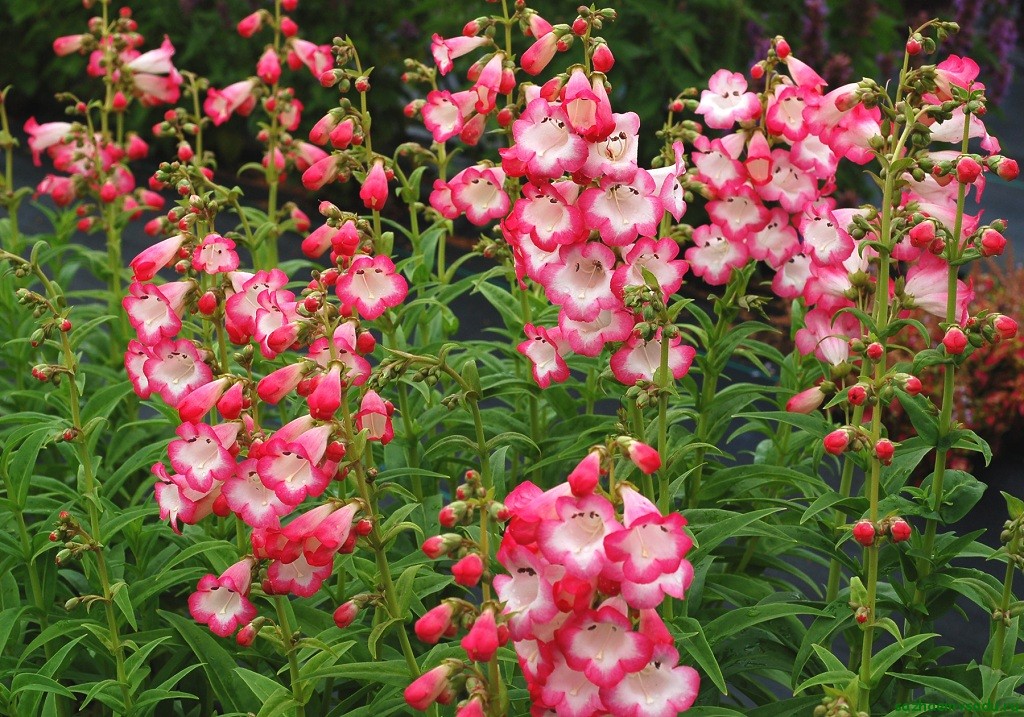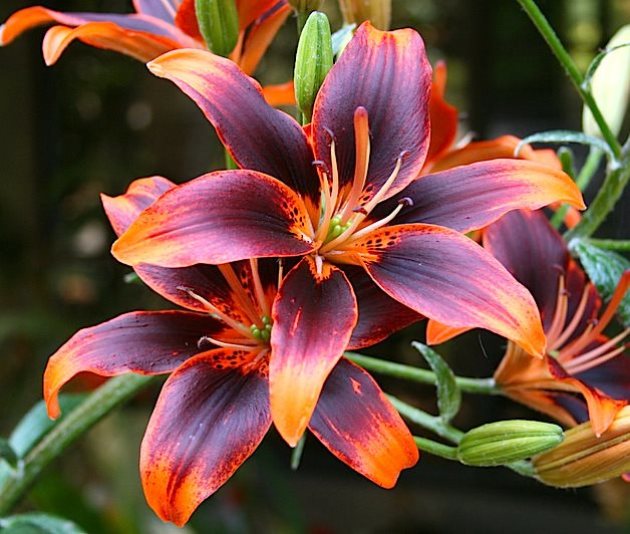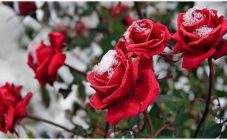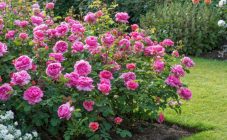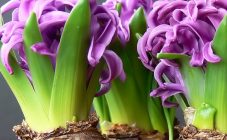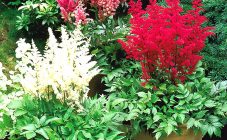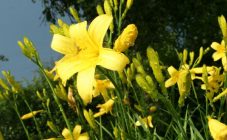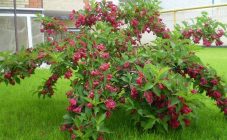Content:
Summer residents consider flower plants an indispensable element of landscape design. However, the flowering period of individual crops does not go beyond a few days or a couple of weeks. Perennial garden flowers that do not require maintenance, large and long-blooming will change the garden area beyond recognition and will delight the owners and neighbors with the brightness of colors throughout the summer season.
Garden unassuming and long-flowering perennials
Perennials that enjoy flowering during the summer are prized by gardeners. The following varieties are considered to be beautiful perennial flowers for the garden, unpretentious and long-flowering.
Anemone
Gardeners are familiar with the name of the garden perennial firsthand. It has long been grown in the front gardens. Lovely catchy flowers attract with a wealth of shapes and colors. Help flower growers create rock gardens and mixborders.
Armeria seaside
The beauty of white and pink flowers attracts gardeners. The plant looks like a carnation from afar. Armeria likes the location near water bodies.
Astrantia is large
Translated from Latin means a star. A perennial garden plant that prefers partial shade and moist soil has a long flowering period when planted in autumn: from six months to 9 months.
Basilist
The culture belongs to the Buttercup family. Distinctive features of the flower:
- erect stem;
- creeping roots;
- openwork basal leaves.
The bush reaches two meters in size. Numerous tiny flowers gather in cluster-shaped, shield-shaped or paniculate inflorescences. The color palette is distinguished by an abundance of shades: white and yellow, cream and purple, pink and green.
Turkish carnation
A herbaceous perennial crop, which is grown as a two-year-old, produces simple, double or semi-double buds. A distinctive feature of the carnation color is the variety of colors and shades.
Delphinium
The Buttercup family, which includes the flower, has about 400 species. The delphinium loves a sunlit area, but suffers from scorching rays at noon. The plant has inflorescences of blue and white, purple and blue shades. The culture blooms in June and July. Removing flower stalks in mid-summer leads to re-flowering.
Sage
Herbaceous aromatic culture is in demand when grown in a spice garden. The unpretentious perennial has a variety of colors: purple and whitish, blue and pink. A drought-resistant plant has a long flowering period - from the arrival of spring to the end of autumn.
Anthemis
It belongs to undersized garden flowers, the height of which is 0.6 m. The intensity of yellowness and orange of the inflorescences resembles a chamomile with carved gray leaves. Anthemis looks perfect in a group planting.Golden glades fit perfectly into a rocky garden or in compositions with coniferous crops.
Astilba
The herbaceous perennial that reproduces by the rhizome has erect stems. The height of the shoots ranges from 10 cm to 2 m. The rich green, coarsely dissected leaves are located on elongated petioles. Small flowers are painted in white, purple, pink or reddish tones. The shape of the inflorescences is paniculate.
The decorative period takes 1.5 months and falls at the height of the summer season. Astilbe - from the category of beautifully flowering perennial flowers in the garden, frost-resistant. Are not affected by diseases. Plants are transplanted to a new place after 5 years.
A shaded garden flower garden prolongs the decorative life of the plant.
Perennial characteristics
Beautiful perennial flowers for the garden, unpretentious long-flowering - decoration of any backyard territory. Undemanding dwarf and tall crops will delight in flowering time, which is longer than annuals. Varietal and species diversity will allow you to create original flower beds in your summer cottage.
Gardeners distinguish the following perennial flowers for the garden, not capricious.
Park roses
Close relatives of wild rose have a strong character, they are not afraid of frost. The selection of plantings with different colors will add elegance to the garden. Park roses are characterized by remontability and a long flowering period.
Coreopsis Rising Sun
A cold-tolerant perennial plant native to the prairies of North America. 50 cm flower is used to decorate flower beds and borders.
The peak of decorativeness is June-October.
The Rising Sun flower is a semi-double orange daisy with a reddish center and the edges of the petals shredded like scissors.
Coreopsis is a graceful flower that looks perfect against the background of dark bushes or among ornamental grasses (as in the natural environment).
Seeds are planted in unprotected soil, starting from the middle of the spring season to June. Protect against pests. If required, special copper strips are used to wrap the bushes.
Shrub aster
The culture forms lush large balls during flowering. In September, each branch of the plant represents a bouquet. However, in the absence of flowers, a catchy ball also looks elegant.
Phlox paniculata
Plant height can reach 1.5 m. The herbaceous flower has powerful roots, which guarantee the lifespan of the perennial. Large fragrant inflorescences appear in early summer and decorate the garden until autumn. The dimensions of the foliage are small, the shape is elongated-lanceolate or oval.
The plant has few competitors due to the richness of the color palette and the sweetness of the delicate aroma. Suitable for the background of the garden area. Breeding methods:
- dividing the bush;
- shoots;
- cuttings;
- seeds.
The correct arrangement of varieties will allow the summer season to bloom phlox.
Penstemon
The herbaceous perennial has weakly branched stems with large shiny green leaves. Flowers of various sizes and colors gather in dense panicles. They acquire pinkish, white, red, blue and purple coloring.
Bronze leaves and white or pink airy flowers of Husker Red contrast in combination with other crops. The main thing is to place the most valuable plant in the center or on the background of the front garden and provide access to sunlight.
The culture is planted in groups on a flower bed or in strips on a bed. Perennial grows well in vases on the street, containers, boxes and pots.
Penstemon is combined with orange-yellow crops. Plant partners in the garden include:
- calendula;
- rudbeckia;
- dimorphoteka;
- yarrow;
- coreopsis.
Hibiscus
The plant with beautiful large flowers is cultivated in central Russia.The perennial is not afraid of frost and has decorative terry inflorescences. During the summer season, the culture grows up to 3 m and blooms profusely. One flower reaches 40 cm in diameter.
Hibiscus likes:
- irrigation of foliage in the evening and morning hours;
- moderate watering;
- feeding every 14 days;
- frequent, however superficial loosening of the earth.
Buzulnik toothed
A garden flower with large leaves, which grows up to a meter, has magnificent inflorescences in the form of baskets. Varieties of flower growers are popular:
- Desdemona. Green foliage with a purple underside.
- Othello.Purple-green color of leaves.
The combination of contrasts: orange flowers with powerful round leaves of a violet tone, brings the buzulnik to a leading position among the representatives of the shady garden.
Asiatic lilies
Hybrid varieties have a varied color palette:
- orange and yellow;
- creamy and snow-white;
- purple and pink.
Plants reproduce by bulbs that are planted in spring or autumn. For Asiatic lilies, a drained, fertile soil with a neutral or slightly acidic pH and a sunlit flower garden is preferable. Vigorous crops produce large numbers of bulbs every year. Planting material can be dug up and shared with neighbors.
Asiatic lilies are both low - up to 40 cm, and medium - up to 90 cm. Suitable for cutting into bouquets.
Gladioli
Low gladioli are planted in an open flower bed, always protected from winds and without stagnant moisture.
In regions with hot and dry climates, gladiolus needs partial shade. The midday heat has a negative effect on the flower. In areas with moderate weather conditions, a light shade is sometimes to blame for a decrease in decorative properties and a delay in flowering.
The plant loves sandstone fertilized with organic matter.
Lakonos
Belongs to not very capricious perennials. American grown from seed grows into a large lush shrub during the summer season. Black shiny berries appear on a plant 1 m high.
Agrotechnology for growing perennials
To make the garden plot cozy, you need to plan the planting of perennials. At the same time, the rule of the three is observed: crops are distributed according to the timing of flowering. Thus, they adhere to the flowering sequence from May to November.
Although most perennials are unpretentious, they put forward certain requirements for planting and care:
- Illumination: light-loving (rudbeckia, bulbous), shade-tolerant (primrose, aquilegia), shade-loving (acid, lily of the valley).
- Soil type and fertility: highly fertile (peony, astilbe), medium fertile (lupine, delphinium), infertile (poppy, iris).
- Humidity: drought-resistant (echinacea, gypsophila), moisture-loving (hosta aquilegia), moderately humid (astilba, phlox).
- Correct placement in the flowerbed. Perennial plants are planted nearby with similar agricultural requirements.
When a perennial is looked after and a favorable environment is created, the flower will thank it with flowering.
Choosing unpretentious flowers for the garden is a difficult task for a summer resident. The difficulty lies in the richness of the assortment of flower perennials.
If garden perennials are selected, follow the recommendations:
- use of one range: cold or warm;
- visual enlargement of the flower garden with the help of monotone and a minimum of flowers;
- giving beauty to the front garden of perennial plants due to the background of pink, white, blue flowers;
- alternation of intense and calm levels;
- flowers with a red color do not occupy a huge area;
- for a garden plot, one catchy saturated flower garden is enough.
Competent composition of compositions in the country will allow you to admire the uniqueness of colors and relax your soul, admiring the undemanding long-flowering perennials.
